Search titles
Displaying results 1 to 10 of 82.

Rethinking Histories of Indonesia »
Experiencing, Resisting and Renegotiating Coloniality
Edited by: Sadiah Boonstra, Bronwyn Anne Beech Jones, Katharine McGregor, Ken M.P. Setiawan, Abdul Wahid
Publication date: 2025
Rethinking Histories of Indonesia: Experiencing, Resisting and Renegotiating Coloniality provides a critical evaluation of histories of Indonesia from the formal period of colonisation to the present day. The volume approaches Indonesian history through the lens of coloniality, or the structures of power and control that underpin colonisation and which persist into the present. Bringing together seventeen authors from across the world, the volume offers an alternative conceptualisation of Indonesian history and lays bare the enduring legacies of and processes that reproduce coloniality.
‘This is a significant and exciting volume in terms of its scale, the range of disciplines, approaches and topics included and, ultimately, for its contribution to the field of Indonesian history and historiography, and Indonesian studies and decolonial studies more broadly … The contributors to this book do [a great service to] students of Indonesian history, its cultures, society and politics, offering new sources, voices, approaches and perspectives. Overall, they provide a fresh and vital critique of not only Indonesia’s colonial history but its continuing lived influences on present day Indonesia and beyond.’
—Jemma Purdey, Australia-Indonesia Centre, Monash University
Coming soon
Notify me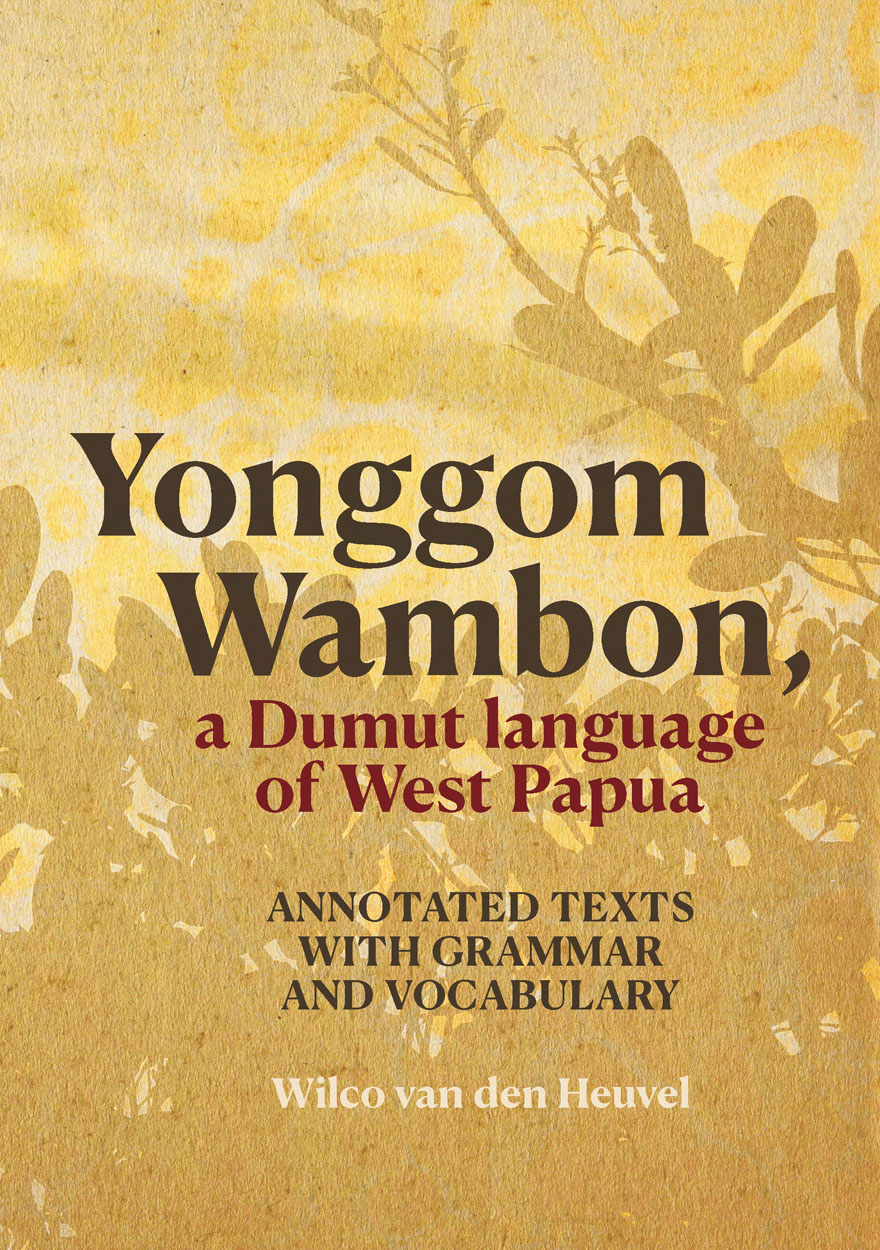
Yonggom Wambon, a Dumut language of West Papua »
Annotated Texts with Grammar and Vocabulary
Authored by: Wilco van den Heuvel
Publication date: February 2025
In this book, the author, Wilco van den Heuvel, intends to make Drabbe’s 1959 description of (Yonggom) Wambon available to a wider scientific public. As such, the book is in line with an earlier reanalysis by the same author of Drabbe’s description of Aghu (1957), which was published in 2016.
In only 45 pages (!), Drabbe managed to present an incredible amount of Yonggom Wambon language data. The current work takes over 400 pages for their re-representation and reanalysis, and includes a 500-item wordlist that Drabbe had written a few years earlier. This book attempts both to increase our understanding of the peculiarities of this individual language, and to contribute to our understanding of the past and present of this still very under-documented part of our globe. An area where—as Drabbe foresaw—minority languages are disappearing, giving way to a common (national) language.
The author expresses his gratefulness to Drabbe, for having unravelled some of the complexities of the languages in this area, which, in Drabbe’s words, form ‘an eldorado for the practitioners of general linguistics’, ‘a labyrinth without escape for missionaries’, and—in the author’s words— ‘offer a unique and highly valuable perspective on specific communities in a specific space and time’.
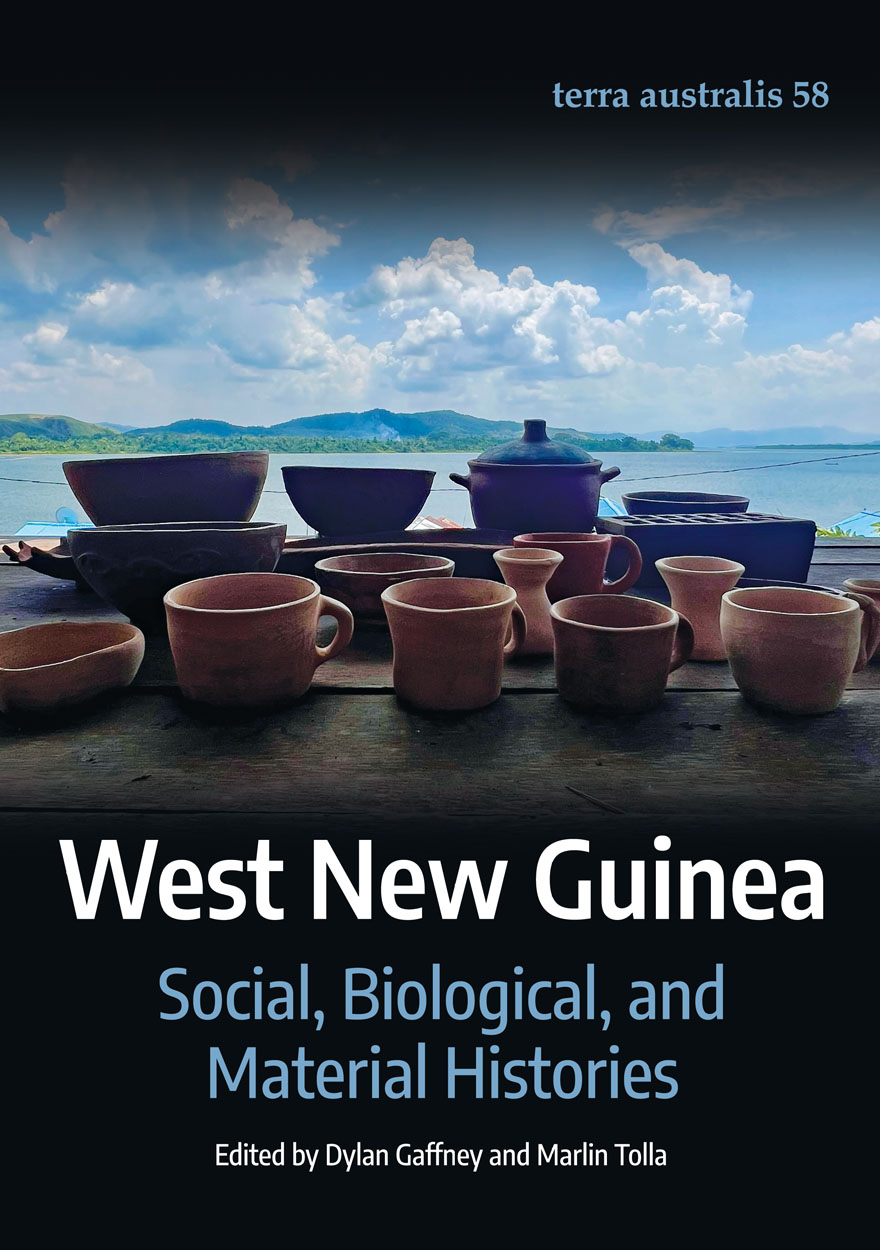
West New Guinea »
Social, Biological, and Material Histories
Edited by: Dylan Gaffney, Marlin Tolla
Publication date: February 2025
This book explores the human past in West New Guinea (otherwise known as Indonesian Papua, West Papua, or Irian Jaya). The western part of New Guinea and its surrounding islands were critical for the early peopling of the Pacific region over 50,000 years ago, when Homo sapiens moved out of Africa and into Asia, seafaring through the islands of Wallacea as far as New Guinea, the Bismarck Archipelago, and the Solomon Islands. After arriving on the shores of West New Guinea, people adapted to diverse environments including coral reefs, tropical rainforests, swamps, montane cloud forests, and savannah grasslands. Over millennia, people transformed these habitats by burning and cutting the forests, translocating plants and animals, and managing access to resources. Food production later emerged in the region as the global climate warmed up around 10,000 years ago. Between 4000–3000 years ago, the Austronesian languages began to enter West New Guinea, with its speakers settling around the coasts and offshore islands. New forms of exchange connected people and, particularly within the last 2000 years, drew West New Guinea into global networks. The objects produced and traded at ethnographic contact—like pottery, stone axes, string bags, shell ornaments, and wooden carvings—can be informative about these networks, but they are increasingly changing as people navigate and transform their material worlds in the present. The examination of these objects in museums not only casts light on their makers, traders, and collectors, but also highlights the ongoing connections that Papuans have with their material culture in the twenty-first century.
The 22 chapters in this book contribute novel perspectives and critical data on each of these themes. The authors come from archaeology, social anthropology, biological anthropology, linguistics, museology, palaeoecology, and beyond. They write about a wide array of West New Guinea’s regions, including the highlands, north and south coasts, Bird’s Head Peninsula, Cenderawasih Bay, and the Raja Ampat Islands.

Ritual Voices of Revelation »
The Origin Narratives of the Rotenese of Eastern Indonesia
Authored by: James J. Fox
Publication date: November 2024
This is a study of a collection of oral compositions of the Rotenese of eastern Indonesia. Recited in semantic parallelism, these compositions require a strict pairing of all words to produce correspondingly ordered verses. These narrative verses create an elevated discourse—a ‘scriptural voice’—intended to reveal the origins of Rotenese cultural life. The translations and exegeses of these origin narratives offer a work of world-class poetic imagination that recounts a dynastic contest between the Sun and Moon and Lords of the Ocean Sea and its epic consequences.
As background to the presentation of these narratives, this study provides a description of Rotenese life expressed in the complementary pairs that the Rotenese themselves use to categorise their world. A concluding chapter examines the Rotenese acquisition of Christianity and the subsequent retelling of the Biblical Genesis in Rotenese parallel verse, thus continuing the general examination of the use of parallelism as elevated ritual discourse. Gathered from poets from two domains on the island, most of these compositions date from fieldwork in 1965–66 and in 1973. The publication of these materials represents the summation of more than fifty years of research.
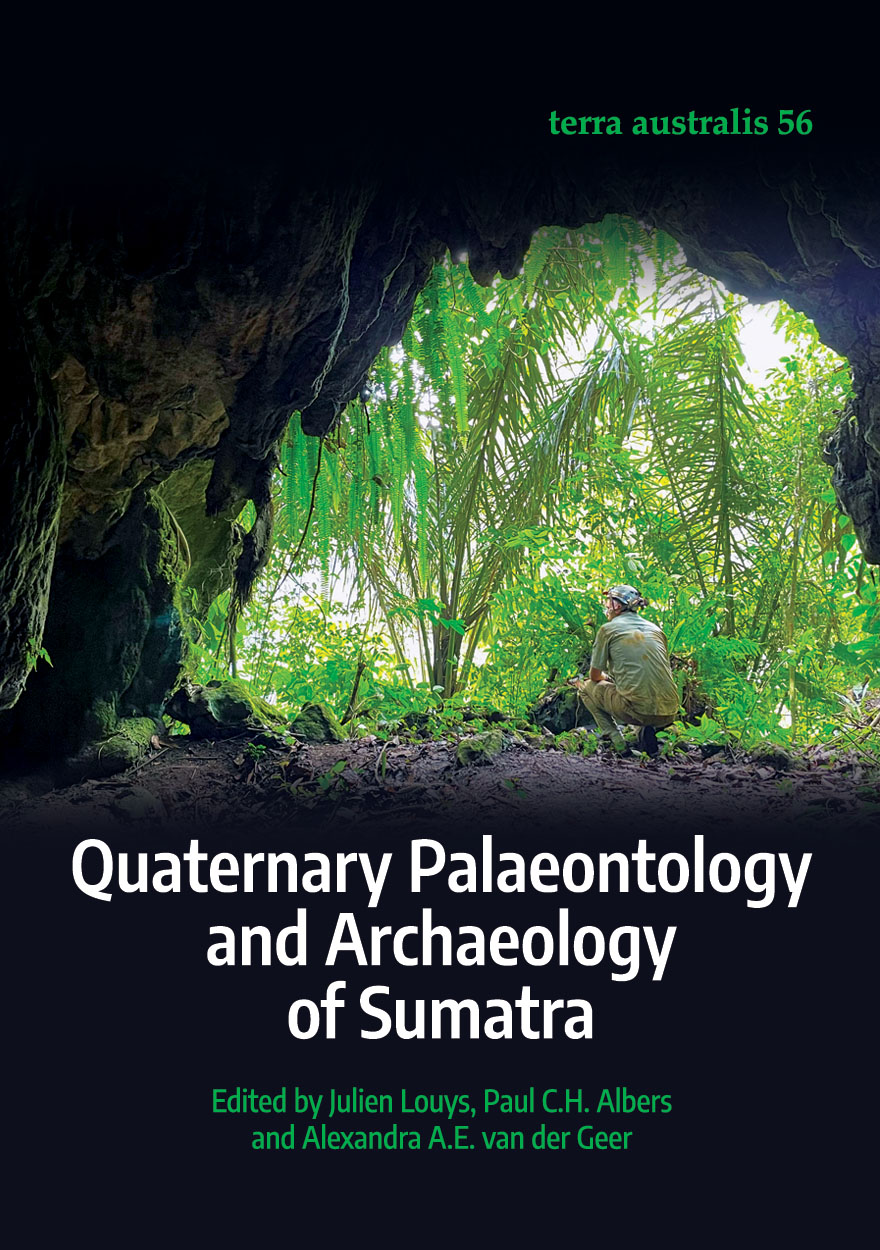
Quaternary Palaeontology and Archaeology of Sumatra »
Publication date: April 2024
“The Indonesian island of Sumatra is part of a chain of islands making up Sunda and the Malay Archipelago. Sumatra is one of the largest islands in the world, housing unique and globally important tropical rainforests, a diverse array of rare plants and magnificent animals, and a population of 60 million who speak a range of Austronesian languages. As beautifully exemplified in this volume, Sumatra is a place which preserves a distinct and long-term human history, studies of which began in earnest with Eugene Dubois’s explorations in the 1880s to find our ancestral ‘missing link’. Archaeological investigation of megaliths and historic empires carry on to this day. A range of topics are explored here, including palaeontological study of fossil mammals and their environments, the routes that Homo erectus took during their wanderings across Indonesia, and the growth and development of societies and empires in more recent periods. This exemplary volume presents a revised view of the history of palaeontological and archaeological research as well as new ground-breaking field research, laying the foundation for future research on the biological and cultural evolution of one of the most majestic islands of the world.”
— Professor Michael Petraglia, Director of the Australian Research Centre for Human Evolution, Griffith University

Resisting Indonesia’s Culture of Impunity »
Aceh’s Truth and Reconciliation Commission
Publication date: August 2023
Resisting Indonesia’s Culture of Impunity examines the role of Indonesia’s first truth and reconciliation commission—the Aceh Truth and Reconciliation Commission, or KKR Aceh—in investigating and redressing the extensive human rights violations committed during three decades of brutal separatist conflict (1976–2005) in the province of Aceh.
The KKR Aceh was founded in late 2016, as a product of the 2005 peace deal between the Indonesian government and the Free Aceh Movement (GAM). It has since faced many challenges—not least from Indonesia’s security forces and former GAM leaders, who have joined together in their determination to maintain impunity for their respective roles in the conflict. Indeed, the commission would not have been established without the tireless work of civil society actors, including non-government organisations and other humanitarian groups.
In Resisting Indonesia’s Culture of Impunity, the editors set out to amplify the role of these civil society actors in the KKR Aceh and in transitional justice in Indonesia. Each chapter has been written by a team of authors, composed predominantly of commissioners and staff from the KKR Aceh itself, members of key civil society organisations, and academics. Further, the editors aim to scrutinise the KKR Aceh from the inside and analyse the establishment and operation of what is perhaps the only genuine state-sponsored attempt to implement transitional justice in Indonesia today.
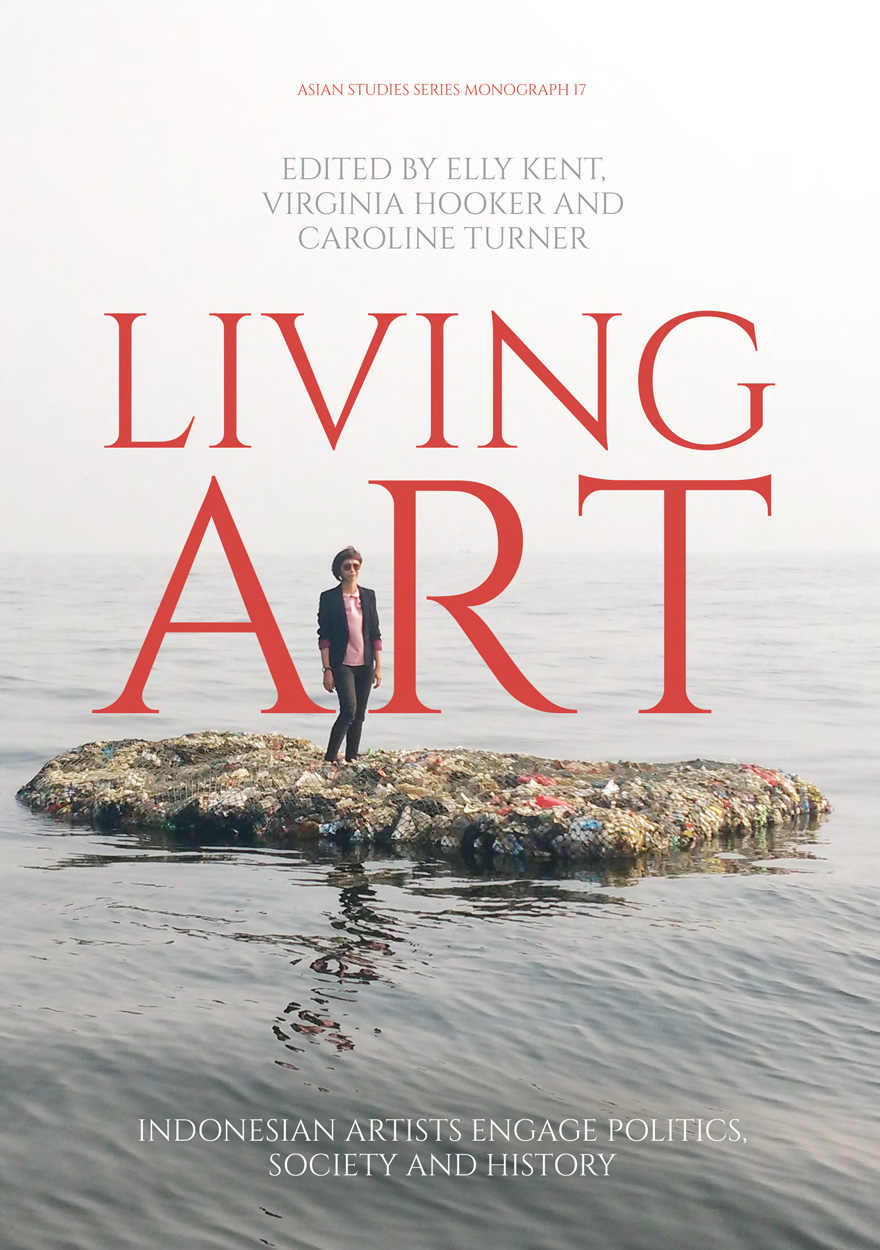
Living Art »
Indonesian Artists Engage Politics, Society and History
Publication date: November 2022
Living Art: Indonesian Artists Engage Politics, Society and History is inspired by the conviction of so many of Indonesia’s Independence-era artists that there is continuing interaction between art and everyday life. In the 1970s, Sanento Yuliman, Indonesia’s foremost art historian of the late twentieth century, further developed that concept, stating: ‘New Indonesian Art cannot wholly be understood without locating it in the context of the larger framework of Indonesian society and culture’ and the ‘whole force of history’. The essays in this book accept Yuliman’s challenge to analyse the intellectual, sociopolitical and historical landscape that Indonesia’s artists inhabited from the 1930s into the first decades of the new millennium, including their responses to the COVID-19 pandemic.
The inclusion of one of Yuliman’s most influential essays, translated into English for the first time, offers those outside Indonesia an insight into a formative period in the generation of new art knowledge in Indonesia. The volume also features essays by T. K. Sabapathy, Jim Supangkat, Alia Swastika, Wulan Dirgantoro and FX Harsono, as well as the three editors (Elly Kent, Virginia Hooker and Caroline Turner). The book’s contributors present recent research on issues rarely addressed in English-language texts on Indonesian art, including the inspirations and achievements of women artists despite social and political barriers; Islam- inspired art; artistic ideologies; the intergenerational effects of trauma; and the impacts of geopolitical change and global art worlds that emerged in the 1990s. The Epilogue introduces speculations from contemporary practitioners on what the future might hold for artists in Indonesia.
Extensively illustrated, Living Art contributes to the acknowledgement and analysis of the diversity of Indonesia’s contemporary art and offers new insights into Indonesian art history, as well as the contemporary art histories of Southeast Asia and Asia more generally.
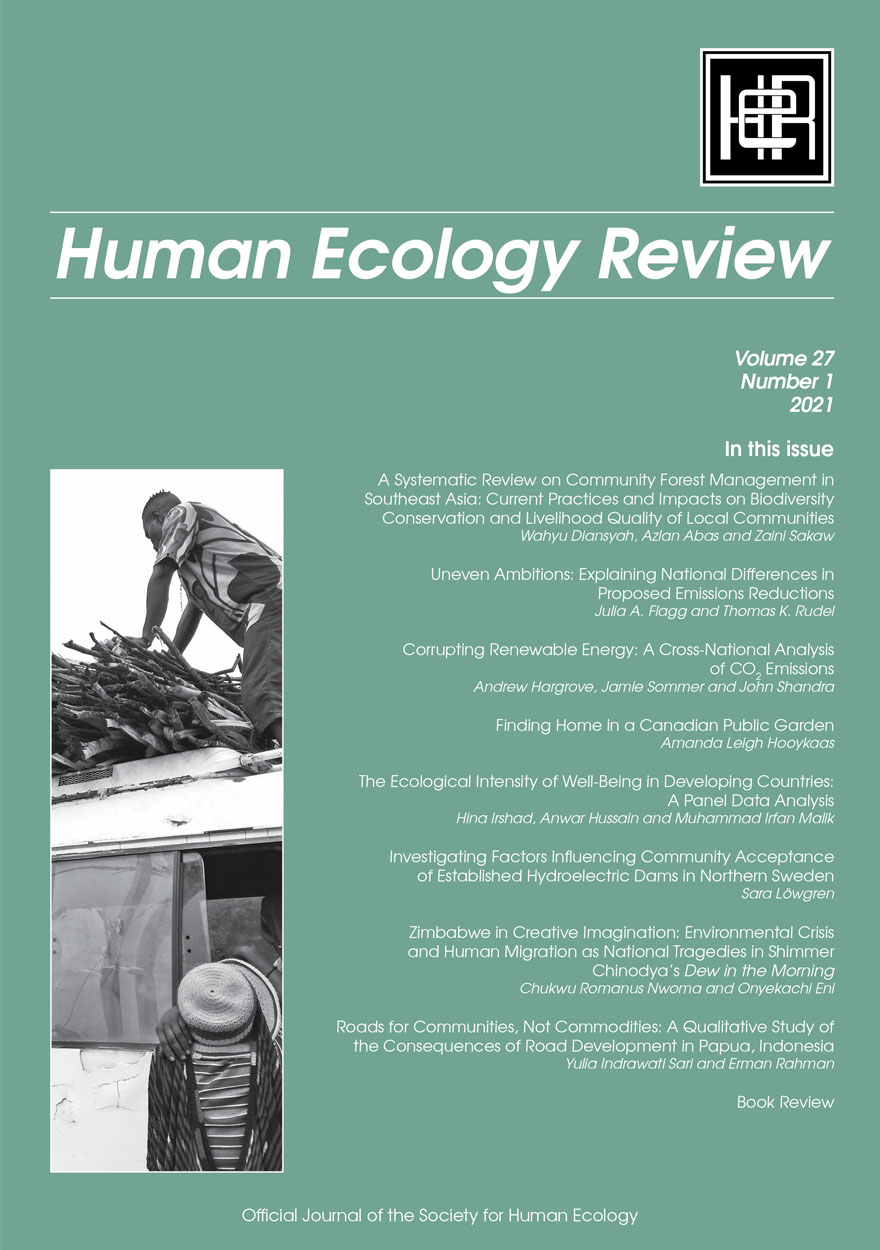
Human Ecology Review: Volume 27, Number 1 »
Publication date: December 2021
This volume of Human Ecology Review represents an internationally diverse range of human ecology research and practice. Diansyah, Abas, and Sakawi present a review of community forest management in Southeast Asia and its impacts on biodiversity conservation community livelihoods. Flagg and Rudel survey national differences in proposed greenhouse gas emission reductions and relative levels of fossil fuel dependencies. On a similar topic, Hargrove, Sommer, and Shandra link national levels of CO2 emissions to levels of executive and public sector corruption, with consequences for transitioning to renewable energy economies. Hooykaas provides a Canadian place-based case study of the role of public gardens in developing a sense of being ‘at home’. Irshad, Hussain, and Malik analyse the ecological intensity of different levels of well-being across a number of developing countries. From Sweden, Löwgren explores a range of factors that encourage or reduce community acceptance of hydroelectric power generation. Nwoma and Eni provide a fascinating discussion on the interconnectedness between literature and Zimbabwe’s environmental crisis. Finally, Sari and Rahaman give us a study of the community impact of road development in Papua, Indonesia.
Download for free
Not available for purchase

Rote-Meto Comparative Dictionary »
Authored by: Owen Edwards
Publication date: November 2021
This comparative dictionary provides a bottom-up reconstruction of the Rote‑Meto languages of western Timor. Rote-Meto is one low-level Austronesian subgroup of eastern Indonesia/Timor-Leste. It contains 1,174 reconstructions to Proto-Rote-Meto (or a lower node) with supporting evidence from the modern Rote-Meto languages. These reconstructions are accompanied by information on how they relate to forms in other languages including Proto‑Malayo‑Polynesian etyma (where known) and/or out-comparisons to putative cognates in other languages of the region. The dictionary also contains two finder-lists: English to Rote-Meto, and Austronesian reconstructions with Rote-Meto reflexes. The dictionary is preceded by three introductory chapters. The first chapter contains a guide to using the dictionary as well as discussion of the data sources. The second chapter provides a short synchronic overview of the Rote-Meto langauges. The third chapter discusses the historical background of Rote-Meto. This includes sound correspondences, the internal subgrouping of the Rote-Meto family, and the position of Rote-Meto within Malayo-Polynesian more broadly.
Searchable electronic versions of the comparative dictionary are provided in two formats at http://hdl.handle.net/1885/251618. The first electronic version is a Lexique Pro export of the dictionary. The Lexique Pro file contains the same data and information in the book version of the dictionary, but does not contain the introductory chapters. See the "About Rote-Meto" tab of the Lexique Pro file for more information on this version of the dictionary. The second electronic version is a text file. It is formatted as a tab separated file and is intended to be read in spreadsheet format. This text file does not contain all the data and information in other versions of the Rote-Meto Comparative Dictionary and should be used in conjunction with these other versions. See the associated readme for more information on what data is included and excluded from that text file.
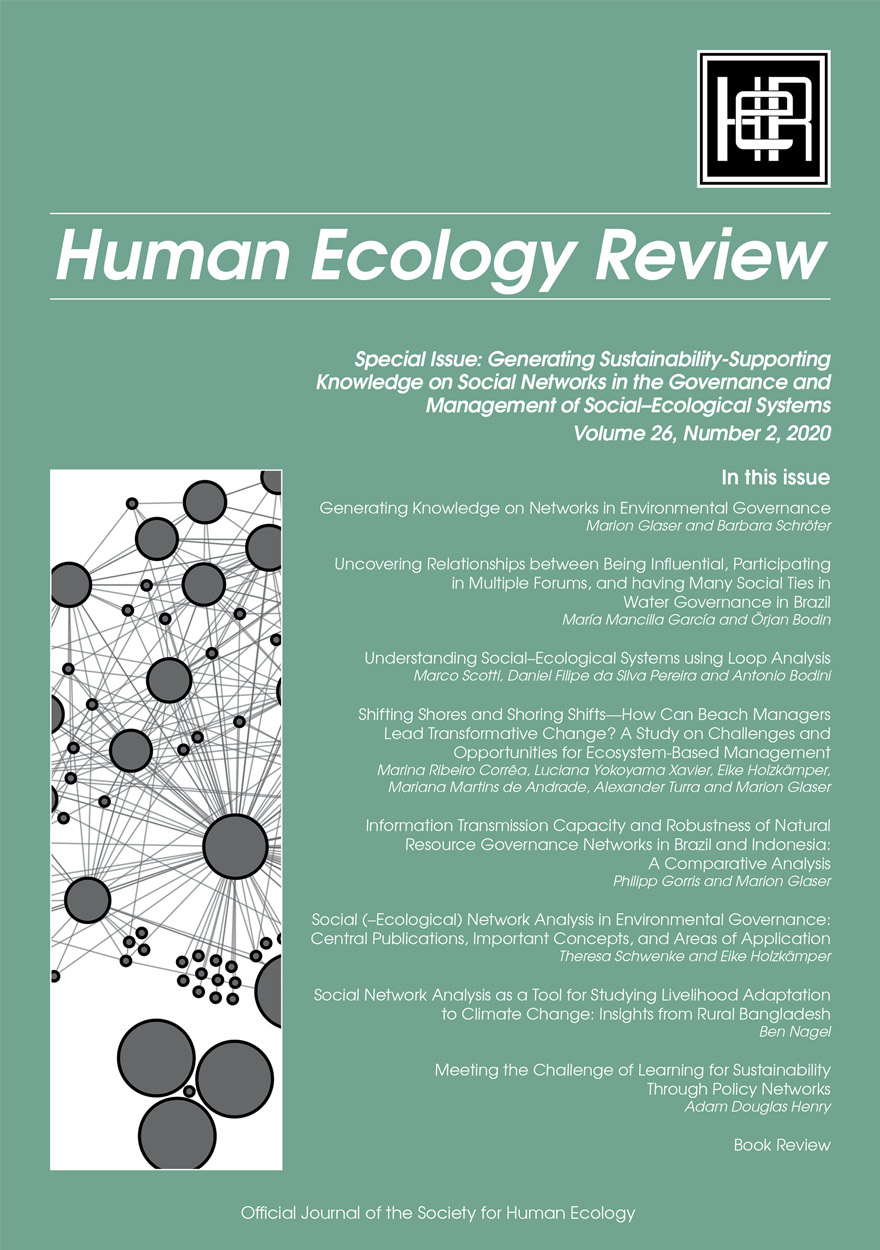
Human Ecology Review: Volume 26, Number 2 »
Publication date: July 2021
This volume is a special issue on ‘Generating Sustainability-Supporting Knowledge on Social Networks in the Governance and Management of Social–Ecological Systems’, compiled by guest editors Marion Glaser and Barbara Schröter. The collection of papers demonstrates the capacity of social network analysis to contribute to understanding the interactions of actors and institutions. María García and Örjan Bodin set out to differentiate to what extent power resides within network structures and whether it is rooted in actor attributes such as class and wealth. Marco Scotti, Daniel Pereira, and Antonio Bodini present loop analysis as a qualitative tool for linking disciplinary domains in integrated analyses of the natural and social science variables. Marina Corrêa and her co-authors examine the role and potential of public sector managers for advancing the ecosystem service-oriented management of the social–ecological systems. Philipp Gorris and Marion Glaser focus on the information transmission capacity and the robustness of actor networks in different approaches to collaborative governance of coastal and marine natural resources. Theresa Schwenke and Eike Holzkämper present a bibliometric analysis of publications that address both environmental governance and social (–ecological) network analysis. Ben Nagel presents a coastal case study from Bangladesh, one of the countries most vulnerable to climate change. The collection is rounded out by Adam Henry, who focuses on sustainability learning at the organisational level, addressing to what extent an organisation’s position in a larger environmental policy network determines learning outcomes.
Download for free
Not available for purchase



